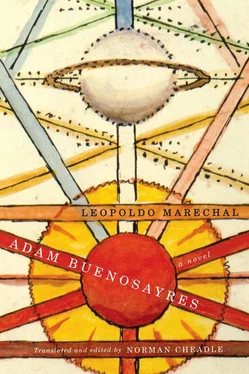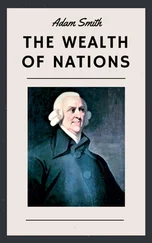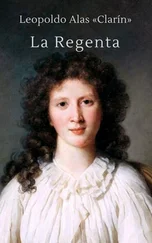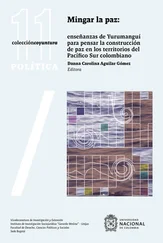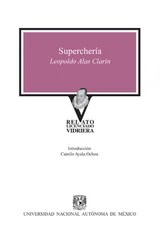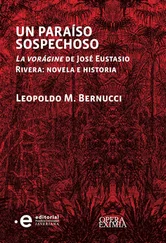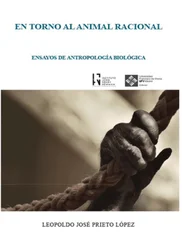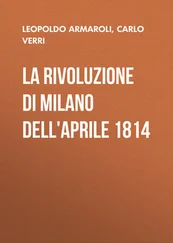11 “De mi pago me he venido / arrastrando mi reboso / sólo por venir a verte / cara de perro baboso.”
12 “De mi pago me he venido, / arrastrando mi chalina, / sólo por venir a verte, cara de / yegua madrina.”
13 Mandinga refers to a people from the west coast of Africa. In Spanish America, the term came to be associated with the religions of African slaves, considered evil by Christianity, and then to mean the Devil, a usage still common in rural Latin America.
14 Schultz speaks in his neocriollo language.
15 In the original: ¡Pirocagaron los Paliogogos! The made-up verb pirocagar is a mock-erudite (and mock-Neocriollo) version of the popular expression cagar fuego , “to shit fire,” which means “to fail, to mess up, to be screwed.” “Pollygogs” is Doña Tecla’s mispronunciation of Paleogogues, Schultz’s neologism meaning etymologically “old leaders” in contrast to the Neogogue or “new leader.”
16 Barcia (682n) and Navascués ( AB 517n) note here the echo of the Inferno (Canto III, vv. 134–6), where Dante falls asleep.
17 Gath and Chaves: see note 648n20. In Books One to Five.
18 Luna Park, often called the “Palacio de los Deportes” [Sports Palace] and built in 1931, is a covered stadium used for boxing matches and other spectacles for mass consumption. Both the Palacio and the Boca Juniors’ stadium, La Bombonera, are still in use today.
19 Barcia (687n) speculates that this sentence alludes to the first presidency (1946–55) of Juan Domingo Perón.
20 Spanish has adopted the Canadian term “toboggan” and resignified it to mean “slide” of the amusement park type. Schultz’s neocriollo word combines “holy” and “toboggan.”
21 The Latin phrase refers to the Pope’s right to appoint a cardinal and withhold his name in pectore , “within his bosom”; i.e., without publicly naming the cardinal.
22 Celtic culture still survives in Galicia, and bagpipes are a traditional instrument there.
23 Alberto Vacarezza (1886–1959) was a popular playwright whose sainetes , comic or melodramatic sketches, reflected life among the lower classes.
24 ad honorem , “without pay.”
25 Waltz over the Waves (see 658n8).
26 Berreta in lunfardo means “fake.”
27 In “learned ignorance” Navascués ( AB 534n) finds an allusion to De docta ignorantia (1440), in which Nicholas of Cusa characterizes the learned man as being aware of his own ignorance.
28 Beffa in Italian means “mockery,” ‘joke,” ‘hoax.”
29 Reference to the maxim: “Cobbler, stick to your last.” In Spanish: “Zapatero, a tus zapatos.”
30 “Unyielding waist” translates inquebrantable cintura . But in the original manuscript Navascués ( AB 536n) finds cintura casta , literally “chaste waist” but suggestive of cinturón de castidad “chastity belt.”
31 The famous military “Marcha de San Lorenzo” (composed in 1901 by Cayetano Alberto Silva) honours General José de San Martín’s grenadiers and commemorates the Battle of San Lorenzo (636n1).
32 The entertainment in confiterías during the 1930s was commonly provided by young women’s orchestras.
33 Emilio Castelar (1832–1899), liberal democratic president of Spain during the First Republic (1873–74), renowned for his oratory.
34 Alfredo Palacios (1878–1965), an Argentine activist known as the first socialist member of Parliament in the Americas, and famous for his speeches.
35 Another allusion to Keyserling’s South American Meditations (see 640n23).
36 Barcia (716n) finds an allusion here to a verse of Garcilaso de la Vega’s “Third Eclogue”: “Flérida, para mí dulce y sabrosa / más que la fruta del cercado ajeno” [Flérida, for me sweeter and tastier / than the fruit of another’s garden].
37 The reference to this Italian monk’s visit in 1640 is obscure but plausible. In El libro de Buenos Aires , Abós includes the testimony of Ascarate de Biscay, who visited Buenos Aires in 1659 and commented that the men “love their leisure and pleasure and are devoted to Venus” (47). Navascués (545n) thinks Marechal may have been referring to the Italian Jesuit Antonio Sepp (1655–1733), who travelled to Buenos Aires in 1690.
38 Emeric Essex Vidal (1791–1861), English painter considered by some to be a precursor of Argentine art, published his Picturesque Illustrations of Buenos Ayres and Montevideo in 1820.
39 The cemetery of La Recoleta , in the centrally located upper-class barrio of the same name, is the final resting place of the wealthy and powerful.
40 The Jockey Club, established in 1882 by Argentine president Carlos Pellegrini for the political and economic elite of the nation, administered the Hippodromes in Palermo and San Isidro. Its original locale, a luxurious palace on Florida Street, is now a tourist attraction.
41 Titania is surely a satirical version of the writer Victoria Ocampo (1890–1979), whose most important accomplishment was the prestigious literary magazine Sur (1931–92), which she herself maintained for several decades, providing a forum for a wide spectrum of thinkers, writers, and artists from the Americas and Europe. Marechal was among Sur ’s contributing authors until the outbreak of the Second World War, when the debate over Argentina’s position on the war hardened the increasing polarization of the cultural scene. Sur , aristocratic and liberal, favoured taking a pro-Allied stance; Argentine nationalists of all political stripes favoured a position of neutrality. Jorge Lafforgue and Fernando Colla, who examined the proofs of the novel’s original 1948 edition, found a longer and more detailed version of the Titania/Ocampo satire (372–3n; reproduced by Navascués [ AB 549n]). At the behest of the managing editor of Sudamericana, Marechal agreed to tone down the passage; the result was this shortened version. Still, its brutality is in striking contrast to Marechal’s respectful article “Victoria Ocampo y la literatura feminina” ( Sur 52, Jan. 1939, 66–70; in OC v, 293–7).
42 As Navascués ( AB 550n) perceptively points out, the common theme in these figures is their controversial treatment of sexuality: Arthur Honegger (1892–1955), French avant-garde composer of the erotic operetta Les aventures du roi Pausole (1930); D.H. Lawrence (1885–1930) author of Lady Chatterley’s Lover (1928); André Gide (1869–1951), whose Corydon (1924) is about homosexuality; and of course the centrality of sexuality in the theory of Sigmund Freud (1856–1939).
43 Navascués ( AB 551n) recalls the medieval legend in which unicorns gently approach maidens to be caressed by them. The inversion of the legend here slyly points up the Ultras’ condition of non-virgins.
44 “El Porvenir” means “The Future.”
45 The Asociación Amigos del Arte (1924–42), located on Florida Street, promoted contemporary art, both national and international, exhibiting the likes of Rodin, Toulouse Lautrec, and David Alfaro Siquieros, as well as young Argentine painters, now consecrated, such as Xul Solar. The association was especially active in the 1920s.
46 In the original, ¡No confundir hinchazón con gordura! This apparently lame aphorism seems to parody those that open Jean Anthelme Brillat-Savarin’s famous book on gastronomie, Physiologie du goût (1825). The second aphorism, for example: “Les animaux se repaissent; l’homme mange; l’homme d’esprit seul sait manger” [Animals stuff themselves; man eats; only the man of wit knows how to eat]. But the noun hinchazón derives from the verb hinchar , ”to inflate,” which in popular language in the River Plate means also “to annoy, pester,” and so Schultz seems to be punning; his Joycean penchant for wordplay is on display several times in Cacodelphia.
Читать дальше
